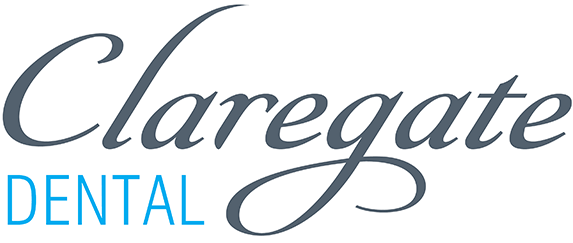
8th July 2025
How Do I Know I Have Gum Disease?
Understanding Gum Disease: An Overview
Gum disease, also known as periodontal disease, is a common condition affecting the tissues surrounding and supporting your teeth. It’s often painless, which means you might not be aware that you have it. However, neglecting gum health can lead to more severe issues, including tooth loss. Understanding what gum disease entails is the first step in recognising its signs and taking preventive measures.
The two main stages of gum disease are gingivitis and periodontitis. Gingivitis, the milder form, is characterised by inflammation of the gums. This stage can be reversed with good oral hygiene practices. On the other hand, periodontitis is more severe, affecting the deeper structures of the gums and potentially leading to tooth loss if left untreated. Knowing the progression of gum disease can help you identify and address it early.
It’s crucial to understand that gum disease doesn’t only affect your oral health. Emerging research links it to various systemic conditions, such as heart disease and diabetes. Therefore, maintaining gum health isn’t just about preserving your smile—it’s about safeguarding your overall well-being.
Common Symptoms of Gum Disease
Recognising the symptoms of gum disease is vital in seeking timely intervention. The early stages might not be painful, but subtle signs can indicate the onset of the condition. One of the first symptoms you may notice is bleeding gums, especially during brushing or flossing. This bleeding is a sign of inflammation and should not be ignored.
Another common symptom is persistent bad breath or a bad taste in the mouth. This can occur due to the accumulation of bacteria and plaque around your gums. If you find yourself frequently reaching for mints or mouthwash to combat bad breath, it might be time to consider the health of your gums.
As gum disease progresses, other symptoms may become apparent. These include receding gums, loose teeth, and changes in the way your teeth fit together when you bite. If you experience any of these symptoms, it’s essential to consult a dental professional to prevent further damage and address any underlying issues.
Risk Factors Associated with Gum Disease
Understanding the risk factors for gum disease can help you take proactive steps towards prevention. Several factors can increase your susceptibility to developing this condition. Smoking is one of the most significant risk factors, as it weakens your immune system and reduces your body’s ability to fight off gum infections.
Certain medical conditions, such as diabetes, can also heighten your risk of gum disease. This is because high blood sugar levels can lead to increased plaque build-up and gum inflammation. Similarly, hormonal changes in women, such as those occurring during pregnancy or menopause, can make gums more sensitive and vulnerable to disease.
Other risk factors include poor oral hygiene, a diet low in nutrients, and certain medications that reduce saliva flow, which helps protect your gums. Being aware of these risk factors allows you to make informed choices about your lifestyle and oral care routine, ultimately reducing your risk of developing gum disease.
The Stages of Gum Disease: From Gingivitis to Periodontitis
Gum disease progresses through distinct stages, each with varying degrees of severity and symptoms. Understanding these stages can help you identify where you might stand and the necessary actions to take.
- Gingivitis: This is the initial stage of gum disease, characterised by redness, swelling, and bleeding of the gums. It’s primarily caused by plaque build-up on your teeth. Fortunately, gingivitis is reversible with proper oral hygiene and regular dental cleanings.
- Early Periodontitis: If gingivitis is left untreated, it can advance to early periodontitis. At this stage, the inflammation starts to affect the bone supporting your teeth. You might notice more severe symptoms, such as increased bleeding and minor gum recession.
- Moderate to Advanced Periodontitis: In the later stages, significant damage occurs to the bone and tissues supporting your teeth. Gums may recede further, and teeth become loose. This stage requires intensive treatment to prevent tooth loss.
Understanding these stages emphasises the importance of early detection and intervention. Regular dental check-ups and good oral hygiene are crucial in halting the progression of gum disease and maintaining oral health.
How to Self-Check for Gum Disease at Home
Performing a self-check for gum disease at home can help you spot early signs and seek professional advice when needed. While this self-assessment doesn’t replace a dentist’s evaluation, it can be a valuable tool in monitoring your gum health.
- Visual Inspection: Use a mirror to examine your gums. Healthy gums should be pink and firm, not red or swollen. Look for signs of bleeding, especially after brushing or flossing.
- Check for Recession: Gently run your finger along your gum line. If your teeth appear longer or if you notice increased sensitivity, it might indicate gum recession, a common sign of periodontitis.
- Monitor for Symptoms: Pay attention to persistent bad breath, changes in bite, or loose teeth. These could be indicators of advancing gum disease.
If you notice any of these symptoms, it’s essential to consult a dental professional for a comprehensive evaluation. Early detection can make a significant difference in managing gum disease effectively.
The Importance of Regular Dental Check-Ups
Regular dental check-ups play a pivotal role in preventing and managing gum disease. These appointments allow your dentist to detect early signs of gum issues and provide timely interventions. Professional cleanings remove plaque build-up that you might miss during regular brushing and flossing.
During a dental visit, your dentist will assess the health of your gums, checking for any signs of inflammation or periodontal pockets. These pockets, formed between the teeth and gums, can harbour bacteria and worsen gum disease if not addressed.
Moreover, your dentist can offer personalised advice on improving your oral hygiene routine and recommend treatments if necessary. Regular check-ups are an investment in your oral health, helping you maintain a healthy smile and prevent complications associated with gum disease.
Treatment Options for Gum Disease
If you’ve been diagnosed with gum disease, several treatment options are available, depending on the severity of your condition. The goal of treatment is to control the infection and prevent further damage.
- Non-Surgical Treatments: For early-stage gum disease, non-surgical treatments such as scaling and root planing are often effective. These deep cleaning procedures remove plaque and tartar below the gum line, promoting healing.
- Medications: In some cases, your dentist might prescribe antibiotics or antimicrobial mouth rinses to control bacterial infection and reduce inflammation.
- Surgical Interventions: Advanced gum disease may require surgical treatments, such as flap surgery or bone grafts, to restore supportive tissues and bone. These procedures aim to reduce periodontal pockets and support tooth stability.
Discussing these options with your dentist will help determine the most appropriate treatment plan for your specific needs. Early intervention can prevent the need for more invasive procedures and preserve your oral health.
Preventive Measures to Avoid Gum Disease
Prevention is always better than cure, and adopting certain measures can significantly reduce your risk of developing gum disease. A consistent oral hygiene routine is the cornerstone of prevention, including brushing at least twice a day and flossing daily to remove plaque build-up.
Regular dental visits are equally important, allowing your dentist to monitor your gum health and provide professional cleanings. Additionally, a balanced diet rich in vitamins and minerals supports your immune system and promotes healthy gums.
Lifestyle changes, such as quitting smoking and managing stress, further contribute to preventing gum disease. Smoking impairs gum tissue healing, while stress can weaken your immune response. By prioritising these preventive measures, you can maintain healthy gums and prevent the onset of gum disease.
The Role of Oral Hygiene in Gum Health
Oral hygiene plays a crucial role in maintaining gum health and preventing gum disease. Proper brushing techniques help remove plaque and food debris from your teeth and gums, reducing the risk of inflammation and infection.
Flossing is equally important, as it reaches areas between your teeth that a toothbrush might miss. Consider using interdental brushes or water flossers for a more thorough clean, especially if you have gaps or orthodontic devices.
Incorporating mouthwash into your routine can provide additional protection against bacteria. Choose an antimicrobial rinse to help reduce plaque and prevent gum disease. By committing to a comprehensive oral hygiene routine, you can safeguard your gum health and enjoy a confident smile.
Conclusion: Taking Charge of Your Gum Health
Taking charge of your gum health is vital for not only maintaining a beautiful smile but also ensuring your overall well-being. By understanding gum disease, recognising its symptoms, and adopting preventive measures, you can significantly reduce your risk of developing this condition.
Remember, regular dental check-ups are an essential part of maintaining oral health. They provide an opportunity for early detection and intervention, helping you avoid more severe complications down the line.
If you suspect you have gum disease or want to ensure your gums are healthy, don’t hesitate to seek professional advice. Book your consultation now to take the first step towards optimal gum health and a brighter, healthier smile.






